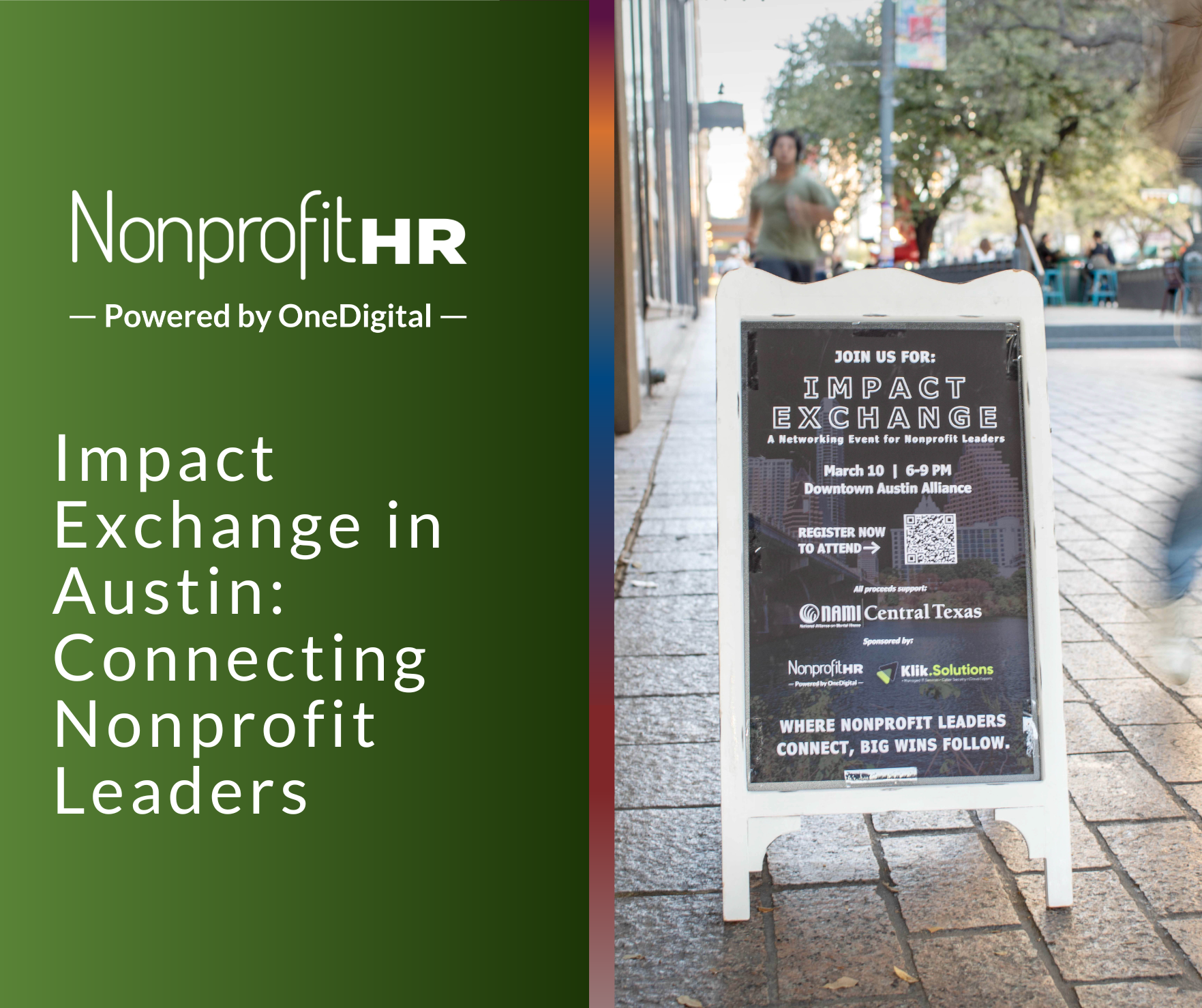WTOP: 5 ways nonprofits can…
According to the 2013 Nonprofit Employment Trends Survey social networking sites are continuing to grow in popularity as recruitment tools in the nonprofit sector. Survey data show that formal and informal networking currently remains the most popular and effective recruiting methods of nonprofits. However, the use of social networking sites—in particular LinkedIn and Facebook—is growing rapidly. Compared to last year’s Nonprofit Employment Trends Survey, respondents reported a 25% increase in usage of LinkedIn and a 30% increase in usage of Facebook.
Various online, print, and in-person recruitment efforts are used by nonprofits, but some are reported to be more popular and effective than others. Respondents were asked to rate how much they used specific recruitment advertising sources. The most frequently used outlets were informal networks and formal networks (85% and 84%, respectively). This was followed by using local newspapers, both online (55%) and print (46%) editions, Craigslist (51%) and LinkedIn (50%). Some popular online job posting websites were also commonly used by respondents. (See the full report for a complete list) LinkedIn continues to be the most commonly used social media outlet for nonprofit recruitment advertising, followed by Facebook and Twitter.
Despite the growth in popularity, the impact from using social networking sites as recruiting tools did not grow, nor did nonprofits’ overall satisfaction with social networking sites. Only 9% of nonprofits responded that using social networking sites had a positive impact on the number of candidates applying. In addition, about one-third of organizations indicated using social networking sites had a positive impact on the costs associated with recruitment advertising (38%) and the use of other online job boards (31%) and one-fifth indicated it had a positive impact on the quality of candidates applying (22%). Overall, only a small percentage of organizations indicated that the use of social networking sites had a negative impact on these areas. It is also important to note that a strong majority of nonprofits surveyed indicated that they experienced no impact from using social networking sites in recruitment strategies.
Nevertheless, since only one-fifth of organizations reported having a formal recruitment budget, websites and social networking sites may be a low-cost option for advertising open positions. Due to the growing popularity and ease of access to these websites, this may be an area where nonprofits could grow their recruitment outreach in order to attract a more diverse candidate pool.
Respondents were also asked what tools they use to search for or source passive candidates. According to the survey report, 61% of nonprofits indicated that they use LinkedIn to search for or source passive candidates. This is considerably higher than those that indicated they use other tools including Industry Databases (33%), Facebook (32%), CareerBuilder.com (20%), Monster.com (15%), and Twitter (8%). However, out of all respondents who reported using LinkedIn, a majority (54%) of respondents indicated that they possess only basic knowledge of how to use LinkedIn for talent acquisition, while 77% indicated that their proactive use (searching and sourcing) of LinkedIn comprised less than 25% of their total LinkedIn use. This finding shows that many nonprofit staff may require additional training on how to more effectively use social media to maximize its potential utility for talent recruitment. Moreover, despite the growing use of social media in recruiting, 92% of nonprofits reported that they did not have a social media recruitment plan to guide them.
For complete details on the use of social media by nonprofit organizations, download the complete survey here. Interested parties may also attend the 2013 Nonprofit Employment Trends Symposium on February 19 in Washington, DC at the Center for Nonprofit Advancement. At this annual symposium the survey will be discussed by experts in recruitment, diversity, retention and other topics covered by the 2013 Nonprofit Employment Trends Survey.





























